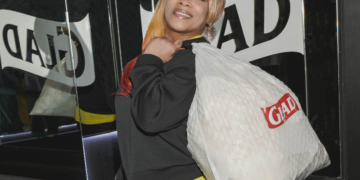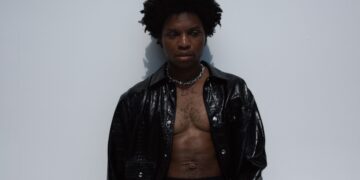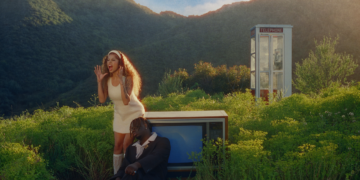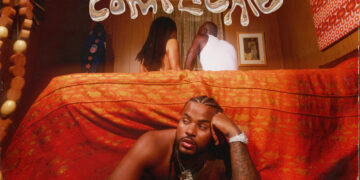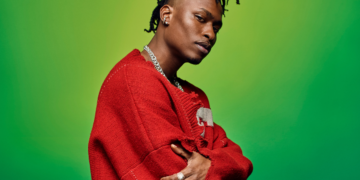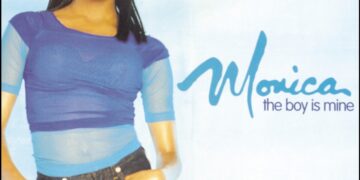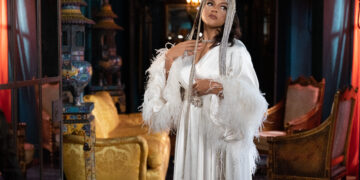Mary J. Blige doesn’t like to be reminded of certain past professional hiccups and personal regrets, especially as it relates to her songs and albums. Take, for instance, 2003’s Love & Life, the soul diva’s sixth album. With P. Diddy, who worked on her first two successful albums, behind the boards again for this reunion project, the two frequent collaborators and friends set out to recapture their hip-hop soul glory from years past. However, the platinum LP didn’t meet a positive mark in Blige’s eyes, and since then, she has disassociated herself with it altogether.
Blige repeated her music detachment efforts at the 2019 BET Awards, where she was honored with the Lifetime Achievement Award. After she accepted the coveted award from Rihanna, the Queen of Hip-Hop Soul took the stage to sing a 20-minute medley of her biggest hits and cult classics, from “My Life” and “No More Drama” to “I Can Love You” and “Just Fine.”
One song that was noticeably not included in her tribute concert was “Be Without You,” from her Grammy-winning album The Breakthrough. It’s a song that Blige hasn’t played for live audiences since 2015. It’s seemingly because the romantic lyrics chronicled the love story and union between Blige and her former manager and husband of 12 years. Until 2015, “Be Without You” was a song that Blige never excluded from her tour set lists.
In 2005, several R&B artists were selling and performing well on the charts. Mariah Carey was an obvious standout, dominating the airwaves with her hit song “We Belong Together” and seeing significant sales for her comeback album The Emancipation of Mimi. As for Blige, she had a reworked version of The Game and 50 Cent’s “Hate It or Love It,” which she dubbed “MJB Da MVP,” bumping in the streets as she was gearing up for the November 22nd release of her greatest hits album, Reminisce.
She also was unobtrusively wrapping up studio sessions for her next official album, The Breakthrough, which was slated to arrive in February 2006. But the plans for the promised retrospective compilation was put on pause after the enormous radio response for the new album’s lead single “Be Without You.” The release date for The Breakthrough was bumped up to December 20.
Bryan-Michael Cox and Johntá Austin, the production and songwriting team behind Carey’s return single “Together,” were summoned to work on the lead single of Blige’s album. Unlike Carey’s single, which reiterated her famous prowess for power ballads, Blige stepped on new soil as it related her vocal delivery with those types of songs.
Much of her previous lead singles, from different eras, honed in on different facets that comprise the Mary J. Blige package. Sample choices and an overall album theme were always on the checklist, but the desire to be technically sound seemed not to be a line item. Sure, vocal maturation took place for Blige throughout her career; however, it typically underlined her aged-soul and sometimes raspy limitations rather than showcasing the true range of her tremendous voice.
That all changed when she released “Be Without You.” As evidenced in live performances leading up to the single’s release, Blige had gotten serious about finding a happy medium between technical precision and emotional potency. With “Be Without You,” Blige found balance in her songwriting.
The lyrics of the urban soul classic was a change of pace for Blige, who had spent most of her prosperous career singing songs about no-good relationships. Here, she was inarguably in love and proved her commitment to her man in an arresting singing style that made you believe every word. In a sense, Blige sounded as if she was reciting the wedding vows of not only herself but those who believed and wanted a forever kind of love.
Blige’s vision of love had a profound effect on “Be Without You.” Was what she felt in her heart and what she sang on wax going to have the same impact on her core audience? She had already attempted to put her love on display on the previous album, and they weren’t necessarily convinced. Seven weeks after its debut at No. 47, the love song had reached No. 4 on Billboard’s Hot R&B/Hip-Hop Songs chart.
Blige upped the ante with the promotion of the song at the 2005 Radio Music Awards. It was the same ceremony where she helped present her counterpart Carey with the Legend Award. Carey plugged Blige’s The Breakthrough during her acceptance speech, urging viewers at home to go out and purchase the album the next day. Blige returned to the stage later that night to deliver her first-televised performance of the song. Full of soul and conviction, Blige wowed the crowd of her peers, including Bono of U2, who couldn’t sit still in his seat.
The Breakthrough hit stores the following day, and a week later, it sold 727,000 in the first week of sales. The massive opening numbers entered Blige’s name in the Nielsen SoundScan history books, becoming the strongest first week sales for an R&B solo female act.
Starting at the top spot on the Billboard 200 and R&B albums chart, Blige’s seventh studio album marked her third leader on the former chart and her seventh consecutive number one on the latter chart. The album was a mix of modern (“Take Me As I Am”) and classic (“I Found My Everything”) soul, dashes of hip-hop (“Enough Cryin”), and a pinch of crossover appeal (“One”). The Breakthrough excited all music tasters — and the charts.
Elsewhere, “Be Without You” was basking in the joy of reaching number one on the Hot R&B/Hip-Hop Songs chart. It reigned over this same chart for 15 straight weeks, walking off with the title of the longest-running No. 1 hit in Billboard history. It’s a chart record that Blige held for more than seven years. A step further, “Be Without You” stayed on the same chart for a total of 75 weeks, the most of any song in the history of the Hot R&B/Hip-Hop Songs chart.
Although “Be Without You” only peaked at No. 3 on the Billboard Hot 100, it didn’t stop the prestige from coming in on other levels. The music video for the record-breaking track, which featured Terrence Howard as her leading man, was retired to BET’s 106 & Park hall of fame. It also won Best Video at the network’s 2006 awards show.
“I have had the wonderful opportunity to work with Mary J. Blige many times throughout her career, both as a photographer and as a director,” renowned photographer and director Matthew Rolston told Rated R&B via email. “This video was made after Mary was very well established as one of America’s leading entertainers. We were lucky enough to cast then-emerging actor Terrence Howard as her love interest. Parts of the video were shot in a home originally owned by Frank Sinatra.”
As “Be Without You” dominated the recurrent R&B chart, the vocals of future live performances were razor-sharp and a breath of fresh air for an artist like Blige, who had once been pigeonholed as a hip-hop fixture. The best of all was her flawless rendition of the song at a JCPenney Jam special in 2007. With the renowned David Foster on piano and her incredible band backing her, Blige made a point to let the world know she was a singer and deserved to be respected as one.
“Be Without You,” along with The Breakthrough album, earned Blige eight nominations at the 2007 Grammy Awards. She walked away with three awards, including Best R&B Album, Best Female R&B Vocal Performance, and Best R&B Song. Out of the three statuettes, the former award was seemingly the most important to Blige, who said in her teary-eyed acceptance speech, “This is the first time that I’ve ever been up here to receive anything, and I thank you so much.”
Fast forward to 2007, Blige released another Grammy-winning album and titled it Growing Pains. “Stay Down,” a radio single from the LP, which was co-written by the “Be Without You” dream team (of Cox and Austin) and produced by Cox, had songwriting nuances of her last big chart-topper.
“Maybe in some of the cadences and flow of the melody, but we definitely weren’t thinking about ‘Be Without You’ when writing [“Stay Down”],” Cox explained to Rated R&B in a 2017 interview. “Moments like ‘Be Without You’ are sometimes lighting in a bottle and you can’t create in a way that forces trying to catch it that way again. What’s crazy is people were a little critical then but now people go back to that song and talk about how much they love that song. It’s kind of interesting to see how a song ages.”
Speaking of songs aging well, “Be Without You” did just that. In 2017, Billboard bestowed the multi-platinum single as the most successful R&B/hip-hop song of all-time. It has also garnered over 100 million listens on Spotify, and more than 188 million views on YouTube.
These days, like Blige’s signature dance moves, her closing lung-powered wail from “Be Without You” is increasingly popular on social media such as Black Twitter and TikTok. Online fans and social media personalities have tried their hands at recreating her showy and extended “hey” from the end of the song. Some have nailed it in good fun, and others have failed miserably.
Far too much credit has been given to Blige’s ex-husband for being the sole inspiration behind the Grammy-winning track. While she is regretfully reminded of him since his name is included in the song’s title on various streaming services, he is not responsible for the massive success of “Be Without You.” The praise for the record can be attributed to Blige’s hard work and dedication to vocal perfection, and personal growth.
The song’s all-star cast of songwriters and producers played a significant role in adding to the legacy of Blige. And most importantly, all those fans who called the radio because they couldn’t be without Blige is why the song is still beloved and still reigns supreme 15 years later.
Revisit Mary J. Blige’s “Be Without You” and entire Breakthrough album below.



